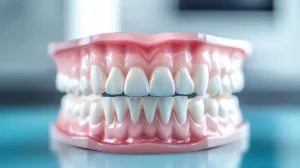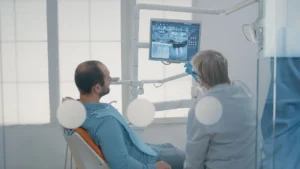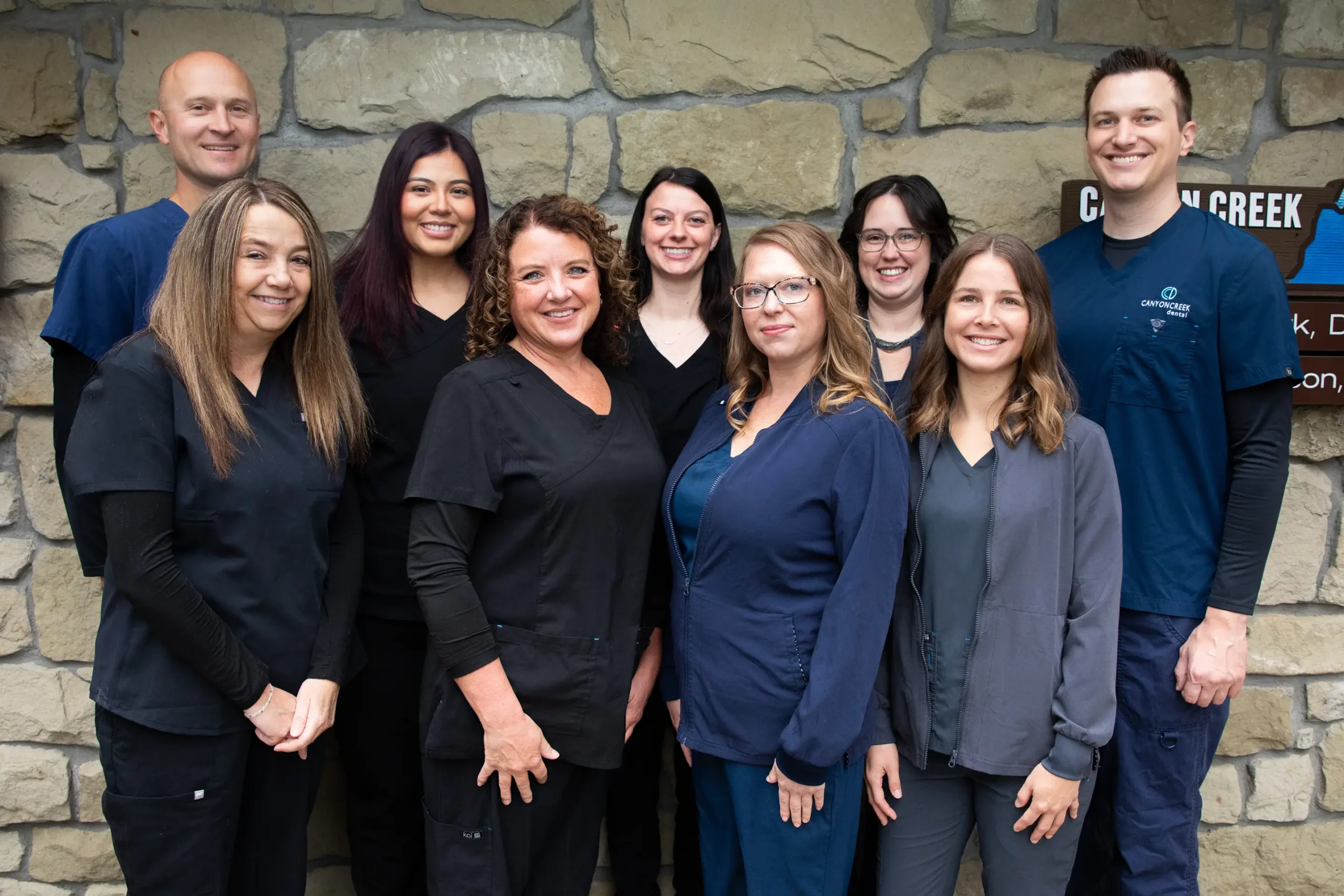Table of Contents
If you’ve been told you need a crown, implant, or another restorative procedure, you’re not alone — restorative dentistry is one of the most common reasons patients visit a dentist each year. At Canyon Creek Dental in Billings, MT, Dr. Pearson and Dr. Clark help patients restore their smiles every day with treatments that improve function, strengthen teeth, and boost confidence.
Understanding your options before your appointment can make a big difference. This guide to dental restorations Billings, MT covers everything you need to know — from the types of restorations available to what to expect during treatment and how to plan for cost.
What Are Dental Restorations?
Dental restorations are treatments designed to repair or replace damaged, decayed, or missing teeth. They help restore your ability to chew, speak, and smile confidently — and they also protect your oral health by preventing further damage.
There are two main categories:
- Direct restorations: Placed directly into the tooth, such as fillings.
- Indirect restorations: Custom-made outside the mouth and bonded into place, like crowns, bridges, veneers, and implants.
1. Types of Dental Restorations (and When You Might Need Them)
Every restoration serves a different purpose. Here’s a breakdown of the most common types offered by Canyon Creek Dental:
Dental Fillings
- Best for: Small to moderate cavities.
- What to expect: Quick and minimally invasive. Composite resin is used to fill the cavity and restore tooth strength.
Dental Crowns
- Best for: Severely decayed, fractured, or weakened teeth.
- What to expect: A crown is a tooth-shaped “cap” placed over the natural tooth to restore shape, size, and strength. With CEREC same-day crowns, Dr. Pearson or Dr. Clark can design and place your crown in a single visit.
Dental Bridges
- Best for: Replacing one or more missing teeth in a row.
- What to expect: A bridge uses the surrounding teeth as anchors and fills the gap with a custom-made prosthetic.
Dental Implants
- Best for: Permanently replacing one or more missing teeth.
- What to expect: A titanium post is surgically placed into the jawbone to act as a tooth root, then topped with a crown or bridge. Implants are the most durable and natural-looking option.
Inlays & Onlays
- Best for: Damage too large for a filling but too small for a crown.
- What to expect: These custom restorations fit precisely into or onto a damaged tooth to restore function and strength.
Dentures
- Best for: Replacing multiple missing teeth or a full arch.
- What to expect: Custom-made removable or implant-supported dentures restore chewing and speaking ability.
2. Dental Restoration Cost Comparison
The cost of restorative dentistry can vary widely depending on the procedure, materials, and complexity of the treatment. Here’s a general estimate of what you might expect:
| Treatment | Purpose | Estimated Cost Range |
|---|---|---|
| Dental Fillings | Repair small cavities | $150 – $350 per tooth |
| Dental Crown (CEREC) | Restore damaged or weakened teeth | $1,000 – $1,800 per crown |
| Dental Bridge | Replace one or more missing teeth | $2,000 – $5,000 per bridge |
| Dental Implant | Permanently replace a missing tooth | $3,000 – $6,000 per implant |
| Inlays & Onlays | Repair moderate tooth damage | $650 – $1,200 per tooth |
| Dentures (Full or Partial) | Replace several or all teeth | $1,500 – $5,000+ |
**These ranges are estimates only. For the most accurate pricing, contact Canyon Creek Dental to schedule a consultation with Dr. Pearson or Dr. Clark.
3. What to Expect During Treatment
Most restorative procedures follow a similar process:
- Consultation and Exam: Our dental team will examine your teeth, take X-rays if needed, and discuss treatment options.
- Preparation: For procedures like crowns or inlays, the tooth is shaped to fit the restoration.
- Impressions or Digital Scans: CEREC technology allows same-day restorations, eliminating the need for temporary crowns in many cases.
- Placement: The restoration is securely bonded into place, restoring full function and appearance.
For more complex procedures like dental implants, treatment may involve multiple visits over several months.
4. How Long Do Dental Restorations Last?
With proper care, many restorations can last a decade or longer. Here’s an average lifespan guide:
- Fillings: 7–15 years
- Crowns: 10–15 years
- Bridges: 10–15 years
- Implants: 20+ years (often lifetime with proper care)
- Dentures: 5–10 years
Good oral hygiene, regular dental checkups, and avoiding habits like grinding or chewing hard objects all extend the lifespan of your restorations.
5. Are Dental Restorations Painful?
Most restorative treatments are performed under local anesthesia, so you shouldn’t feel pain during the procedure. Some patients may experience mild soreness or sensitivity afterward, but this typically resolves within a few days. For those with dental anxiety, sedation dentistry is also available at Canyon Creek Dental to help you feel more relaxed and comfortable throughout your visit.
6. Recovery and Aftercare Tips
Proper aftercare helps ensure your restoration lasts and functions well. Follow these tips:
- Avoid sticky or hard foods for a few days after your procedure.
- Maintain regular brushing and flossing habits.
- Schedule follow-up visits as recommended by Dr. Pearson or Dr. Clark.
- Report any pain, swelling, or unusual changes right away.
7. Why Choose Canyon Creek Dental in Billings, MT?
Canyon Creek Dental combines advanced technology with compassionate care to deliver high-quality restorative dentistry. Dr. Pearson and Dr. Clark have extensive experience helping patients restore function, health, and confidence — whether you need a simple filling or a full smile reconstruction.
From same-day crowns and implants to custom bridges and dentures, our goal is to make every step of your treatment as seamless and stress-free as possible.
✅ FAQs About Dental Restorations
1. How do I know which dental restoration I need?
Your dentist will evaluate the condition of your teeth, your oral health goals, and your budget before recommending the best option.
2. Does dental insurance cover restorations?
Most insurance plans cover part of the cost for medically necessary restorations like fillings, crowns, and bridges. Cosmetic procedures may not be fully covered.
3. How soon can I eat after a dental restoration?
It’s best to wait until the numbness wears off before eating. For crowns, bridges, and implants, stick to soft foods for the first 24 hours.
4. Can restorations look natural?
Yes. Modern materials closely mimic natural enamel, so your restoration blends seamlessly with the rest of your smile.
5. What happens if I don’t get a recommended restoration?
Delaying treatment can lead to more severe decay, infection, or even tooth loss. Addressing issues early often saves time, discomfort, and money.
Schedule Your Consultation Today
If you’re ready to restore your smile, Canyon Creek Dental is here to help. Dr. Pearson and Dr. Clark provide personalized care and advanced restorative solutions tailored to your needs.
📞 Call our Billings, MT office today to schedule your consultation and take the first step toward a stronger, healthier smile.




